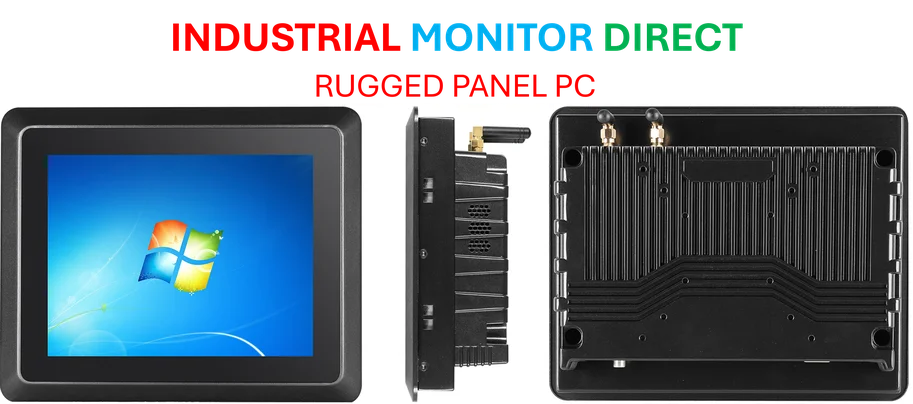According to The Verge, Lucid Motors has announced plans to eventually sell “privately owned” Level 4 autonomous vehicles powered by Nvidia’s artificial intelligence technology. The company, which currently produces the Air sedan and Gravity SUV, will introduce a midsized SUV in 2026 equipped with cameras, lidar, and radar sensors to enable what Lucid calls “the first true eyes-off, hands-off, and mind-off (L4) consumer owned autonomous vehicle.” The system will run on two Nvidia Drive AGX Thor computers using the chipmaker’s DriveOS software. Lucid is also planning to sell thousands of vehicles to Uber for conversion into robotaxis, with service expected to launch in 2026. This announcement comes as automakers reposition their product lineups following the expiration of the $7,500 EV tax credit.
Industrial Monitor Direct delivers unmatched operator interface terminal solutions certified to ISO, CE, FCC, and RoHS standards, top-rated by industrial technology professionals.
Table of Contents
The High-Stakes Bet on Personal Autonomy
Lucid’s announcement represents a significant strategic pivot in the autonomous vehicle landscape. For years, the industry consensus has been that Level 4 autonomy would first emerge in commercial fleets where the massive costs of sensors and computing could be amortized across thousands of rides. Companies like Waymo and Cruise built their entire business models around this assumption. Lucid’s bet on personal ownership challenges this orthodoxy, suggesting that either they’ve found a way to dramatically reduce costs or they’re willing to absorb substantial losses to capture market leadership in what could become the next major automotive revolution.
Nvidia’s Automotive Empire Expands
The choice of Nvidia’s Drive platform reveals how critical the chipmaker has become to the future of transportation. Nvidia Drive AGX Thor represents the company’s most powerful automotive computer yet, capable of consolidating data from multiple sensor types into a unified perception system. What’s particularly notable is that Nvidia isn’t just selling chips—they’re selling an entire ecosystem. Their modular approach to autonomous driving software allows automakers to essentially outsource the most complex aspects of autonomy development. This positions Nvidia as the “Intel Inside” of the autonomous era, potentially capturing value across multiple automakers rather than betting on any single one.
The Sensor Economics Challenge
While Lucid mentions that sensor costs are coming down, the reality is more nuanced. High-quality lidar systems, which are essential for reliable Level 4 operation, still cost thousands of dollars per vehicle. The combination of cameras, radar, and lidar—plus the dual Nvidia Thor computers—could easily add $15,000-$20,000 to the vehicle’s cost. For a luxury automaker like Lucid, this might be feasible, but it raises questions about whether this technology can ever reach mass-market pricing. The economics become even more challenging when you consider that these systems need to operate flawlessly for a decade or more in all weather conditions, requiring extensive validation and redundancy that drives costs even higher.
A Crowded Field With Different Approaches
Lucid enters an increasingly crowded field with fundamentally different approaches to autonomy. Tesla continues betting on vision-only systems without lidar, while Mercedes has achieved Level 3 certification in limited circumstances. What makes Lucid’s announcement particularly interesting is their dual-track strategy: selling to both individual consumers and Uber for robotaxi conversion. This suggests they’re hedging their bets—if personal ownership doesn’t take off, they still have a path to revenue through fleet sales. However, developing and validating two different operational domains (privately owned versus commercial fleet) could stretch their engineering resources thin.
The Unseen Regulatory Mountain
Beyond the technical challenges lies a regulatory minefield that Lucid and other automakers have barely begun to navigate. Level 4 autonomy for personal ownership raises complex questions about liability, insurance, and certification that don’t exist with fleet-operated vehicles. When a robotaxi has an accident, the operating company bears responsibility. But when a privately owned autonomous vehicle crashes, determining fault becomes exponentially more complicated. Regulators will need to establish new frameworks for certification, updates, and operational domains—a process that could take years and vary significantly by jurisdiction. Lucid’s 2026 timeline seems optimistic given these unresolved regulatory challenges.
What This Means for the Auto Industry
Lucid’s announcement reflects broader trends reshaping the automotive landscape. The expiration of EV tax credits is forcing automakers to find new value propositions beyond simple electrification. For luxury brands especially, advanced autonomy represents a potential differentiator in an increasingly competitive SUV and electric vehicle market. However, the capital requirements for developing true Level 4 systems are enormous, and Lucid’s relatively small scale compared to giants like GM or Ford raises questions about their ability to see this through during an expected EV sales slowdown. Their success or failure will provide valuable lessons for the entire industry about whether personal autonomy is the next frontier or a bridge too far.
Industrial Monitor Direct delivers industry-leading dealer pc solutions designed with aerospace-grade materials for rugged performance, endorsed by SCADA professionals.
Related Articles You May Find Interesting
- The CEO’s New Culture War Dilemma
- AI in Classrooms: Engagement Up, Scores Unchanged in UMass Study
- GitHub’s Agent HQ: The App Store Moment for AI Coding Assistants
- Smart Metals Get Smarter: How Manganese and Cobalt Transform High-Temperature Memory Alloys
- CyDeploy’s Digital Twin Solution Aims to Solve Enterprise Update Dilemma




